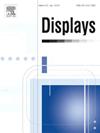An image inpainting model based on channel attention gated convolution and multi-level attention mechanism
IF 3.7
2区 工程技术
Q1 COMPUTER SCIENCE, HARDWARE & ARCHITECTURE
引用次数: 0
Abstract
Deep learning-based image inpainting models can effectively improve the clarity and restoration of damaged images. Most inpainting models fail to fully leverage deep semantic information, which leads to structural inconsistencies or missing details, especially when dealing with images containing large regions of missing information. This paper introduces an image inpainting model that integrates channel attention gated convolution (CAGC) and multi-level attention mechanism (MAM), referred to as CAGC-MAM model. The model is based on a generative adversarial network (GAN) and employs a two-stage coarse–fine network structure. Through the CAGC module, it effectively captures global features, mitigating the limitations of standard convolutional receptive fields. The MAM module combines spatial and channel attention to precisely extract critical information, ensuring the accuracy of restored details. Moreover, a joint loss function is applied to enhance detail consistency further. Qualitative and quantitative analyses conducted on CelebA-HQ and Paris Street View datasets, indicate that CAGC-MAM model excels in image clarity, detail enhancement, and overall consistency, showing superior performance in both computational time and inpainting effectiveness compared to existing classic models.
求助全文
约1分钟内获得全文
求助全文
来源期刊

Displays
工程技术-工程:电子与电气
CiteScore
4.60
自引率
25.60%
发文量
138
审稿时长
92 days
期刊介绍:
Displays is the international journal covering the research and development of display technology, its effective presentation and perception of information, and applications and systems including display-human interface.
Technical papers on practical developments in Displays technology provide an effective channel to promote greater understanding and cross-fertilization across the diverse disciplines of the Displays community. Original research papers solving ergonomics issues at the display-human interface advance effective presentation of information. Tutorial papers covering fundamentals intended for display technologies and human factor engineers new to the field will also occasionally featured.
 求助内容:
求助内容: 应助结果提醒方式:
应助结果提醒方式:


